Largest Italian-built Cruise Ship Delivered to MSC
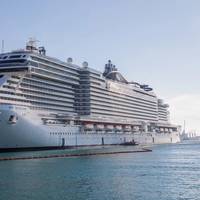
MSC Group’s Cruise Division on Wednesday officially took delivery from shipbuilding group Fincantieri of its new flagship MSC Seascape, said to be the largest and most technologically advanced cruise ship ever built in Italy.The vessel is the 21st to join the MSC Cruises fleet and the fourth to have been built by Fincantieri as part of a €7 billion investment package for 10 ships. The shipyard will also build six new vessels for MSC’s luxury travel brand, Explora Journeys.The 170…
Largest Italy-built Cruise Ship Delivered
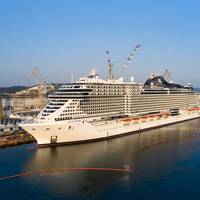
Italian shipbuilder Fincantieri has said it has delivered the MSC Seashore - the largest cruise ship to be built in Italy - to the cruise division of MSC GroupAlso, Fincantieri said Monday that MSC Seashore's sister ship MSC Seascape was under construction at the Monfalcone shipyard. MSC Seascape is expected to enter service in the winter of 2022.Pierfrancesco Vago, executive chairman of the Cruise Division of MSC Group, said the construction of MSC Seashore is an investment that generates an impact on the Italian economy of almost 5 billion euros and the employment of up to 4…
MSC Cruises Returns to Thordon to Keep Seashore Clean
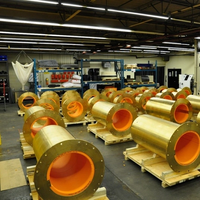
Thordon Bearings has received an order to supply a water-lubricated propeller shaft bearing solution to Fincantieri’s Monfalcone shipyard for installation to MSC Seashore, the third Seaside Class cruiseship to which Thordon’s COMPAC system has been specified.As part of a scope of environmentally-sustainable technology to feature aboard the 339m long, twin screw vessel – the first of two enriched Seaside Evo Class ships scheduled to enter services in 2021 – Thordon will supply two 628mm (24.7in) diameter COMPAC propeller shaft bearings…
When it comes to Water Treatment, Experience Counts
Scienco/FAST, an experienced manufacturer of Marine sewage devices (MSD) recently received an extraordinary service order. Or, maybe it’s not that extraordinary.Scienco/FAST, a St. Louis, Missouri-based manufacturer has, over many years, had plenty of experience in dealing with archived orders. In fact, the firm just had a call from a client that needed to replace a part on a previously installed Scienco/FAST system. So what? Well, it turns out that the system was installed onto a domestic tugboat, way back in 1975. That more-than-43-year-old workhorse is still in service. And, so too is the Scienco/FAST system that’s been on board since it was launched.For its part, Scienco/FAST says that this is just one, of countless typical examples of how long the overbuilt Marine/FAST units can last.
Carnival Vista Recognized as 'Green' Ship
Classification society Lloyd's Register has bestowed the "ECO Notation" designation on the new Carnival Vista, marking the first Carnival Cruise Line ship to achieve this distinction. The notation recognizes that the cruise line designed, built and operates Carnival Vista in a manner that exceeds current maritime statutory environmental regulations. Lloyd's Register (LR) established a set of voluntary standards that vessels can seek to achieve that exceed regulations established by the International Maritime Organization and other national and international regulatory agencies. Vessels seeking the ECO Notation must comply with a set of rules established by LR that govern ship design as well as pass LR's surveys and audits during the construction process and once the ship is in service.
Wärtsilä to Upgrade Residential Ship "The World"
"The World", the largest, private, residential ship on the seas, will be retrofitted with a Wärtsilä Advanced Wastewater treatment system and a Wärtsilä Nacos Platinum system for navigation and external communication purposes. The Wärtsilä Advanced Wastewater solution will replace an existing system and keep the vessel in full compliance with the International Maritime Organization's (IMO) requirements concerning the prevention of pollution from ships. The ship is owned by its residents and is managed by ROW Management Ltd based in Fort Lauderdale, Florida, USA. The contract with Wärtsilä was signed in November. The equipment is scheduled for delivery in April, 2016.
Treatment Standards Needed for Oily Galley Water
Marine regulators have been urged to introduce performance standards for the separation of fats from galley water before the oily mix enters the onboard treatment process and causes system failure. Currently there are no IMO standards for the separation of fats, oils and grease from galley water, despite the treated water having to comply with the MEPC 227(64) regulation, which does not allow the discharge of any oils. Mark Beavis, the Managing Director of water treatment specialist ACO Marine, said: “Galley water should be free of waste sludge, fats, oils and greases before it enters the treatment process otherwise biological overloading and system blockages can occur, causing system failure and possible pollution.
New Wastewater Treatment for Queen Mary 2
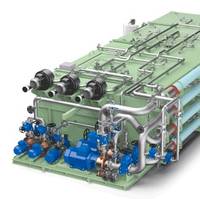
Cunard’s Queen Mary 2 will be fitted with a Wärtsilä advanced wastewater treatment system, enabling the cruise ship to comply with the IMO’s requirements concerning the prevention of pollution from ships. The contract, awarded by Cunard Line during the third quarter of2014, will see the installation of two Wärtsilä’s Hamworthy Membrane BioReactor (MBR) systems to replace existing onboard solutions which are now due for replacement. Wärtsilä said its MBR solution is designed to facilitate the management and treatment of both grey and black wastewater…
Hybrid Hype
The Hudson and East rivers are constantly abuzz with swarms of ferry, patrol, and cargo traffic. In August, New York hosted the Transportation Research Board’s ferry committee for a midyear conference. I was fortunate to be a guest presenter at this event and speak on behalf of vessel operations on the U.S. Marine Highways. With such high use on these historic waters, it was not surprising that much of the discussion circled back to the environment and vessel impact. When congress expanded the Marine Highways program in 2010, it was a big win for the marine industry. Funding new projects to merge people and freight off of the accident-prone and traffic-laced streets and onto unpaved highways is a philosophy we can all embrace.
Historic Russian Sailing Ship Replica Prepared for Launch
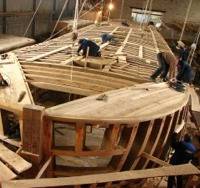
An exact copy of Russia's first 58-cannon battleship God's Predestination was laid down at Pavlovsk Shipyard almost one year ago. The keel-laying ceremony was attended by Voronezh Governor Alexei Gordeyev and Metropolite Sergius. According to Nadezhda Marinkina, "undoubtedly, we'll implement the contract on the due time, in December. The most problematic issues such as project development and registration have been already resolved. Along with our subcontractor, JSC Varyag from Petrozavodsk, we have spent half of 200 million rubles appropriated for the ship construction.
Evac introduces ORCA III
Evac, the leading supplier of advanced wastewater collection and treatment solutions introduces the ORCA III small footprint physicochemical advanced wastewater treatment unit. The ORCA III is the ideal wastewater treatment system for merchant vessels, navy and patrol vessels, ferries, offshore supply vessels, service vessels and platforms, and for mega-yachts, requiring a compact design, small volume and footprint and fully automated operation. The ORCA III comes in six different sizes, with a hydraulic loading capacity ranging from 20cu.m./day down to 1.5cu.m./day. It is ideally suited for efficient wastewater treatment for vessels which stay idle part of the time, thanks to its physicochemical treatment technology.
Headworks Bio Inc. Contract for Allure of the Seas
Headworks Bio Inc. announced the signing of a contract with STX Europe in Turku, Finland, for the completion and commissioning of a wastewater treatment system for the Allure of the Seas cruise ship. The Allure of the Seas will be delivered to its owner, Royal Caribbean Cruise Lines, at the end of this year. Using innovative moving bed bioreactor (MBBR) and Return Activated Sludge technologies, the system is another step forward in the trend towards advanced onboard wastewater treatment and water reuse. Allure of the Seas is the sister ship to the Oasis of the Seas, also built by STX Europe for Royal Caribbean International. It will have capacity for 5,400 guests onboard in 2,700 staterooms with a crew contingent of 2,160 members.
Carderock Tests Novel Ship Wastewater Treatment System
Engineers in the Wastewater Management Branch at the Naval Surface Warfare Center's Carderock Division (NSWCCD) in Bethesda, Maryland assess, test and evaluate technologies for treating ship-generated graywater. Graywater consists of wastewater from showers, sinks, galley, scullery and laundry sources. The most recent accomplishment includes the design, fabrication, installation and initial testing of a shipboard graywater treatment system sponsored by NAVSEA 05R24. The equipment treats graywater generated by a crew of 75. It was installed on USS BONHOMME RICHARD (LHD 6) by an alteration installation team from the Environmental Improvement Section (Code 9153) at NSWCCD Ship Systems Engineering Station in Philadelphia…
Vessel Retrofitted with Wastewater Treatment System
Vehicle ferry Bowen Queen, operated by the British Columbia Ferry Corporation (BCFC), has been retrofitted with Hydroxyl's enclosed wastewater treatment system. The Hydroxyl system uses ozone to disinfect the effluent rather than chlorine, thereby eliminating the need for chemical storage on the vessel. In biological treatment systems, bacteria are used to "eat" the organic products and chlorine is subsequently added to disinfect the effluent prior to discharge. Non-biological systems screen the solids but the harmful byproducts of using chlorine are still evident and the soluble organics are not removed. As a result, this type of system…







